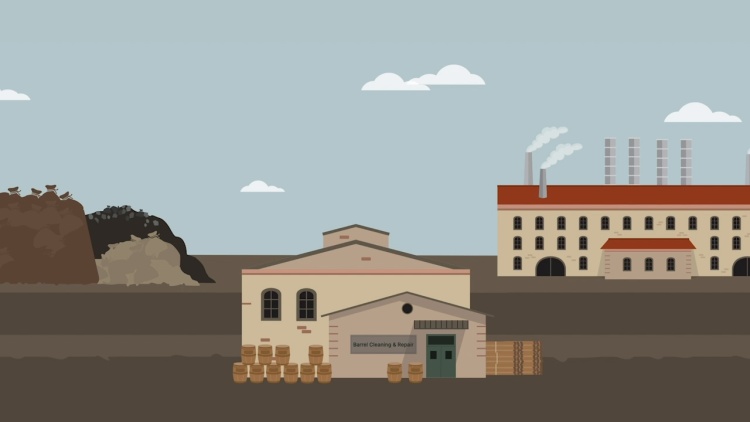Harbison v. City of Buffalo
New York Court of Appeals
152 N.E.2d 42 (1958)
- Written by Rose VanHofwegen, JD
Facts
In 1924, Andrew Harbison, Sr. (plaintiff) purchased land in the City of Buffalo (defendant) to build a cooperage. The city had not yet zoned the land, but existing nearby uses included a dump and a glue factory. Initially, Harbison’s business made wooden barrels, but over time it shifted to reconditioning used steel drums, storing about 700 drums stacked 10 feet high outside. In 1926, the city zoned the property for residential use. From 1936 to 1956, Harbison obtained a junk-dealer license and continued the business. Meanwhile, the dump and glue factory disappeared, and residential neighbors moved in who found the barrel-yard objectionable. The city amended its zoning ordinances to phase out nonconforming uses over a three-year period. After three years, the city sent Harbison a letter notifying him to cease operations and refused to reissue his license. Harbison sued the city, demanding it issue the license. The trial and appellate courts agreed with Harbison, finding the ordinances unconstitutionally invalid. The city appealed on three arguments: First, Harbison’s nonconforming use was not lawful when the city zoned the property, because reconditioning barrels did not qualify as operating a junk shop. Second, Harbison was not entitled to a peremptory license, because he had a picket fence instead of the solid fence the ordinance required. Third, the city claimed its phase-out amendment was a valid exercise of police power.
Rule of Law
Issue
Holding and Reasoning (Froessel, J.)
Dissent (Van Voorhis, J.)
What to do next…
Here's why 899,000 law students have relied on our case briefs:
- Written by law professors and practitioners, not other law students. 47,000 briefs, keyed to 994 casebooks. Top-notch customer support.
- The right amount of information, includes the facts, issues, rule of law, holding and reasoning, and any concurrences and dissents.
- Access in your classes, works on your mobile and tablet. Massive library of related video lessons and high quality multiple-choice questions.
- Easy to use, uniform format for every case brief. Written in plain English, not in legalese. Our briefs summarize and simplify; they don’t just repeat the court’s language.





